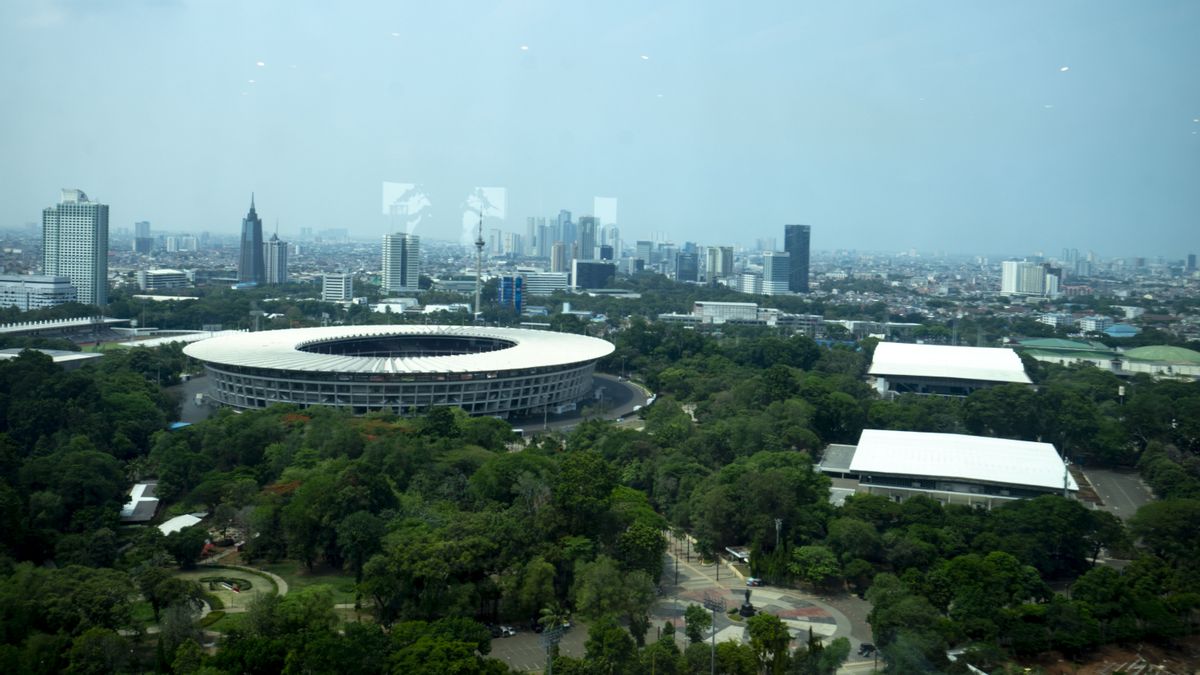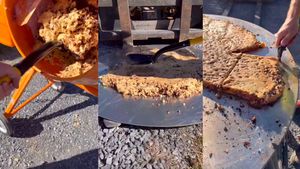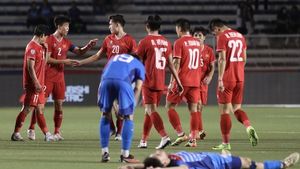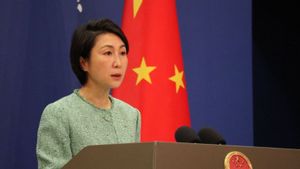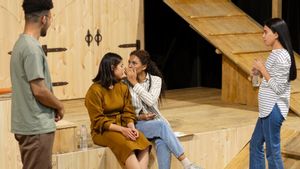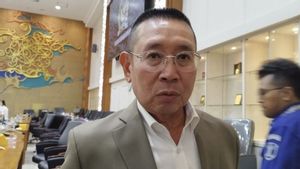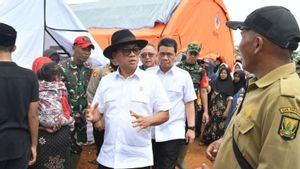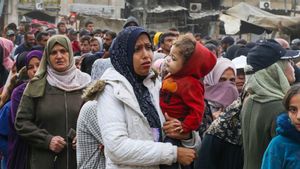JAKARTA - The naming of an area in Jakarta has a certain story. At least, there is a reason why the name appeared. It could be due to natural conditions, or someone's acquaintance in the area. Likewise Senayan, has various stories to make the name famous as a sports complex.
One of the origins of the name Senayan, is the story of a lieutenant from Bali who lived in 1680 in the area. The lieutenant's name was Wangsanaya. But this story still needs to be further explored.
But certainly, the term Wangsanaya has appeared in Rachmat Ruchiat's book The Origin of Place Names in Jakarta. He said, the word Wangsanayan could mean residential land or land belonging to Wangsanaya.
The word Wangsanayan was what slowly turned into the word Senayan, an area in the center of Jakarta. This story is reinforced by the existence of a map published by the Topographisch Bureau Batavia in 1902. At that time the Senayan area was still written with the name Wangsanajan or Wangsanayan.
Another story about the origin of Senayan, was written by Alwi Shahab in his book Batavia Kota Hantu. Through the Bab Kampung-Tua Tua, it is told that Senayan, which has an area of 270 hectares, comes from the Betawi language which means Senenan or a type of horse riding.
"The name is thought to have emerged since Thomas Stamford Raffles, Governor General of the Dutch East Indies (1808-1811) made it a place for British citizens to play Polo, considering that these citizens really like horse riding," said Alwi Shahab.
Now, the Senayan area is changing shape. From the area where the Betawi people live, it became a sports complex in 1960 for the fourth Asian Games.
Evictions of Betawi villages like this have occurred since 1949. At that time, the Betawi village in Kebayoran Baru was changed, so that it became a new settlement covering an area of 730 hectares.
Back to the story about Senayan. Quoted in his book entitled Betawi Tempo Doeloe from Abdul Chaer, the eviction in Senayan involved 1,688 houses, kiosks, cattle sheds, and the felling of 700,000 trees in Balur Village, Senayan Village, Petunduan, and Penjompongan. This eviction was carried out for the construction of the sports complex.
The eviction victims are given understanding and compensation by the central government. Around 60,000 residents of Senayan village were moved to Tebet, Slipi and Ciledug as compensation for this eviction.

One of the popular and satirical criticisms related to the evictions in Senayan, had appeared in the series Si Doel Anak Sekolahan (1994–2006). The series was played by big names as well as Betawi figures, including Benyamin Sueb, Rano Karno, Mandra and others.
This satire about Senayan was told when Kasdulah (Si Doel) had just graduated as an engineer. Babenya si Doel (played by Benyamin Sueb) promised that when his son became an engineer, he would visit his former ancestral village.
They went by opelet to Senayan, to be precise at the Gelora Bung Karno Stadium. They came there knowing themselves, the land they were treading on was no longer theirs.
Although he seemed reluctant to enter the stadium, Doel was reminded by his babe, "I just want to invite you to let you know that this is your former ancestral land."
Then they stepped onto the field, right in front of the goal.
"This is the cave house first," continued the Babe.
"How come you still remember?" asked his wife, the mother of the Doel.
"Yes, remember, please. People are being bullied here. Well, there is a gatet tree there. In sono, a durian tree," said the baboon excitedly.
The visit had to end quickly, because they were sitting in the field area while the people were practicing football. And at that moment an iconic chatter emerged from Benyamin Sueb regarding the Indonesian National Team practicing, "practice, you win, you win!"
The GBK stadium was built in 1960, with the help of the Soviet Union during the time of prime minister Nikita Kruschev. The purpose of development is not only to welcome the Asian Games, but also to serve as a political lighthouse for Sukarno to the world.
Quoted from Bung Karno's Autobiography: Connecting the People's Tongue, written by Cindy Adams, Sukarno made comments regarding the construction of GBK. "These are all not for my glory, all of this was built for the glory of the nation. So that my people are respected by the whole world. "

Senayan Now
During its development, Senayan has undergone many changes. From what was once a Betawi village, it is now a business and hospitality center. In fact, GBK, which was previously intended for sports agendas and mass gathering, already has many benefits, especially as a venue or venue for large music concerts, both domestic and foreign musicians.
Arrangement for the sake of arrangement was carried out to beautify the GBK, in order to create a quality landscape as a Green Open Space (RTH) in the city center.
However, this kind of development also has an impact on environmental problems. Earlier this year, floods hit Jakarta. Senayan is one of the areas affected by the flood.
Director of Walhi Jakarta Tubagus Soleh Ahmadi, when met by VOI some time ago, said that this area was originally Green Areas. But turned into a built-up area. This is what makes a change in environmental problems there.
"Some of the evidence we can see now, such as hotels, shopping centers, and elite settlements that were built since the 1990s and 2000s. This means that the government allows even the impression of 'facilitating' investments that damage the environment. So the impact is today how we feel how the ecological damage has caused an ecological disaster, "said Ahmadi.
The English, Chinese, Japanese, Arabic, and French versions are automatically generated by the AI. So there may still be inaccuracies in translating, please always see Indonesian as our main language. (system supported by DigitalSiber.id)
